The Family Story
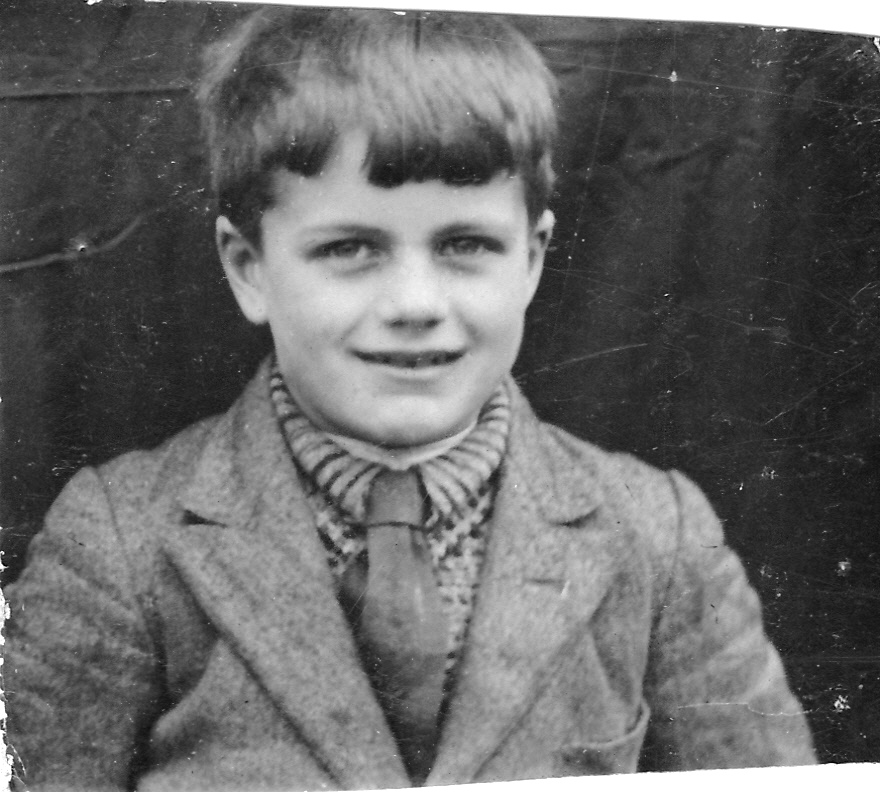
A note from Richard Chester:
ln preparing the family tree I decided to only go back to the ancestors about whom I had some details, rather than just present a list of names from earlier generations. This presentation has been prepared from early papers and family photographs which are now in a book held by my daughter Helen.
The story of the Hardcastles, my mother's family, starts with John Hardcastle who was born 1740, and the Chester story starts with Richard Chester, born 1768.
The Hardcastles
In 1990, when Skelton Church Council decided to close the Church of Christ the Consoler in Newby Park and to move back to St. Helen's in the village, I had the opportunity to review some of the Hardcastle papers.John Hardcastle (b.1740) was the blacksmith in Skelton from the late 18th century, and a letter from 1796 from John Bradford, solicitor, describes his allotments on Skelton Common and Common Fields, and his duty to maintain fences. In 1807 he is listed as a voter in a West Riding Election - The poll for Knights of the Shire.
Amongst the papers were John H.'s notes of a meeting held in 1810, at which it was decided to pull down a previous church and build the present St.Helen's. The notes list the subscribers to the building fund and the seating arrangements, including the Hardcastle family, for St.Helen's which was then used until 1876. The burial ground near the Church, given by Earl de Grey in 1850, contains many gravestones of the Hardcastle family.
(The Church of Christ the Consoler was built in the 1870's by the Vyner family of Newby Hall to commemorate a family tragedy: it was funded by money raised to pay the ransom of a son captured by Greek brigands, but who was killed before the money could be handed over).
John lived until aged 83 and in 1822, the year before his death, applied for the licence to run the Black Lion pub in Skelton. It was next door to the blacksmith's, so much have quenched a few thirsts.
John's son, Thomas Hardcastle, was married to Margaret who was 16 years younger than him. After his death in 1828 (aged 50) she survived him by another 50 years, living until an impressive 85. Margaret was very much head of the family. I believe they rented a farm in Skelton village, and also owned 30 acres on which they paid tithes of £6-12s-6d to the Dean of Ripon. Margaret also still owned the blacksmith shop, one or more cottages, the Clubroom and held the licence for the Black Lion for many years.
They had four sons - John, William, Simon and Henry, and a daughter Ann.
John & Henry farmed in Skelton, and Henry also ran the Black Lion pub for a period around 1881, whilst the other two sons travelled much further afield.
William went to Australia and died there in the early years of the Gold Rush in 1853 at the age of only 34.
Simon was a sugar plantation manager in Hawaii, and many fascinating connections are mentioned in one of his letters home from Hawaii to Henry's wife. (lt is interesting that two young men from Yorkshire travelled so far in their work - perhaps not so unusual during the growth of international trade in the British Empire of the 19th century).
John's sons, John and Thomas Hardcastle, took over at Mulwith farm in 1884 (Henry died in 1890). Their cash-book shows the typical prices on the farm in the late 19th century:-
Wages £15 per annum
Yearling horse £57
Cattle £10
Sheep £2
Pigs £2
John and Thomas farmed at Mulwith until John died in 1914 and Thomas died in 1916. I have been told that Thomas drank too much in his later years and that two of his sons, Arthur Henry and John Thomas, had to take over when they were still quite young.
John Thomas joined the Kings Royal Rifle Corps in Nov 1915 aged 25 and served with the Expeditionary Force in France & Flanders. He was wounded at Flers in France in Sept 1916, but subsequently rejoined his unit in Jan 1917. However he was taken prisoner in July, and died of a sickness in Aug 1917 in Deinze, Belgium in a German military hospital. By sad coincidence, he was engaged to marry Annie Chester from Low Moor farm.
He left an estate of £388 to his brother Arthur Henry, who continued to farm Mulwith and the land he owned in Skelton.
(No picture available of John Thomas)
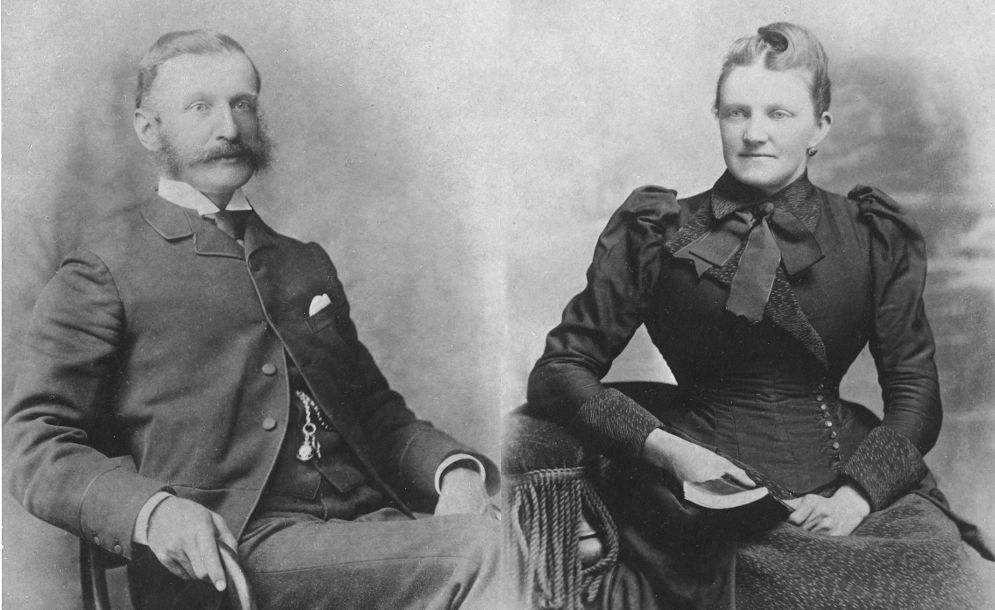
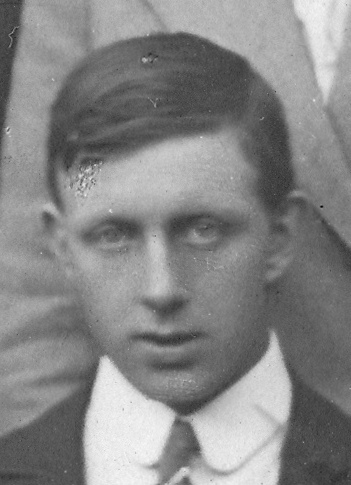 Arthur
ArthurThomas Hardcastle and his wife Mary had four other children:
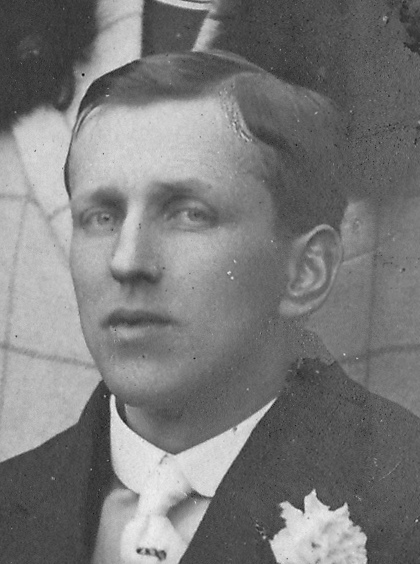
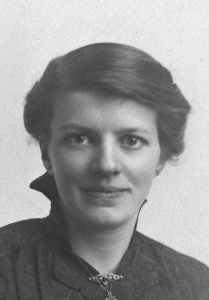
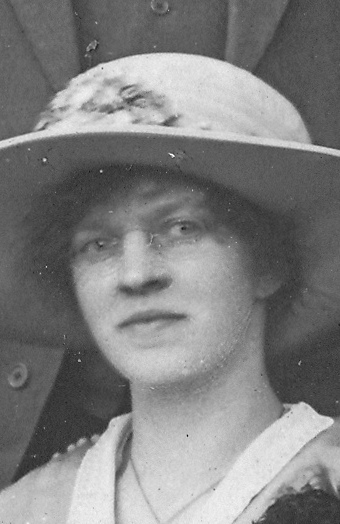
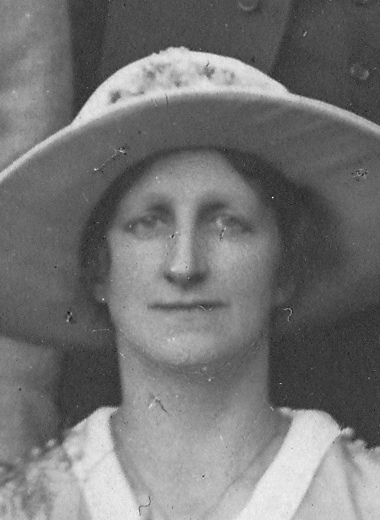
- Herbert George who became manager of the Ripon branch of Barclay's Bank, but died of cancer aged 52;
- Mabel Helen, my mother, who married Richard Chester;
- Edith Mary who married Richard's brother Thomas of Low Moor Farm;
- Anne lsabel.
Arthur retired in 1957 and lived in Skelton village. Anne lsabel looked after him at Mulwith and then in Skelton until she died in 1966. Arthur, last of the Hardcastles in the Skelton area, died in 1972 aged 79.
The Chesters
The Chester family farmed in the Threshfield area of Wharfedale in the 18th & 19th centuries, but then migration away from the dale means there is no local connection today.
Baines Directory for 1822 records a Richard Chester ('Gentleman') living in Threshfield, and the census of 1841 for shows Richard Chester, aged 70, farming there.
It is likely that he was father to William Chester (1795-1830) of Threshfield, but who had died before the 1841 census, aged only 35.
William and his wife Jane had 5 children, including the eldest son Richard who later farmed at Moss House farm (and with whom the original Richard retired to live until he died in 1850).
William's youngest son William moved to Low Cow House farm near Winterburn in the 1850's. William's wife, Mary Metcalfe, was the daughter of the Metcalfe family that farmed at what is now the Old Hall public house in Threshfield. By 1857 William is listed in 'Kellys Directory of the West Riding', and in the 1861 census as 'farmer of 206 acres and employing 1 labourer'.
However, Low Cow House farm was very isolated, and very sadly William's grave at Rylstone shows a son and two daughters who died as infants (James 19mth, Mary-Jane 4 and Elizabeth 6), all between January & June in 1866. I understand diphtheria was the cause and that this great loss resulted in their mother Mary taking her own life in April 1867, aged only 34.
By the 1881 census the Chester family had left Low Cow House. (It's not clear whether this was directly related to the planning of Winterburn reservoir, which was estimated in 1884 to cost £45,000 to build. The Reservoir was opened in 1893 and flooded Low Cow House farm and its land). William himself had gone across to Lancashire, lodging as a shepherd in Whittington.
His eldest son Richard, with his wife Anne, had found his way to Boroughbridge and was innkeeper of the Black Swan pub on the High Street by 1881. The next census -1891 - shows Richard as both farmer and innkeeper - but this time resident at the Malt Shovel pub in Boroughbridge. This is about the same time as he began renting Low Moor Farm from the Newby Estate, but the farmhouse was being rebuilt, hence his extended stay in Boroughbridge before moving into Low Moor.
The 1891 census also shows his father William had come to live with them, until he died in 1893.
Low Moor Farm was the next,calmer phase of Richard's turbulent life.....
Grandfather Chester
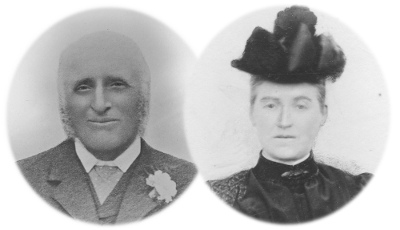
Richard and his wife Anne had nine children in 13 years, and when Anne died aged 46 in 1901 the elder daughters brought up the younger members of the family. The four sons: Ernest, Herbert, Richard and Thomas all farmed, as did the husbands of two of the daughters, Alice and Elizabeth. In total they occupied a large part of the farming land in the Boroughbridge area. Two of the daughters, Annie and Ada, stayed with their father, and Eva lived with her sister Alice.
When Richard Chester moved into Low Moor farm in 1891 at the age of 38, with his wife Anne, it was mainly a stock farm - beef cattle and sheep - and in the early 1900's they established a well-known flock of pedigree Wensleydale sheep. (This breed was crossed with the Swaledale to produce the 'Masham' ewes - a popular cross on lowland farms).
He was one of the largest breeders of Wensleydale sheep, and as an exhibitor and judge he had success at the Yorkshire, Royal and many other shows. He was for many years a member of the Wensleydale Long Wool Sheepbreeders Association.
ln the days before motor vehicles they kept touch with Threshfield & district by horse and trap or on horseback, and Richard's sons used to drive the ewes and young carthorses all the way to the Threshfield area for summer grazing.
As one might guess, old Grandad was a tough old boy, making his sons work very hard but in due course got them all established on their own farms:
Ernest at Village Farm, Marton-le-Moor
Herbert at Home Farm, Sharow
Richard at Corner Farm, Copt Hewick
Thomas at Low Moor Farm, near Skelton
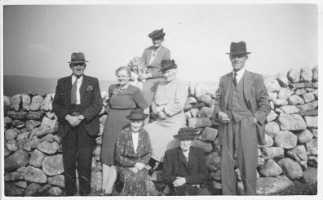
L to R: Thomas, Edith, Ada, Eva, Annie, Mabel, Richard Chester (child is Kathleen)
Grandfather retired from Low Moor in the 20's to live at 'The Firs', Langthorpe with his daughters Ada and Annie, and up to his death kept various lots of cattle on grazing which he rented in the area. He relied on his sons (and grandsons) to help him move his cattle around, and to market, as even in the early thirties few cattle or sheep were moved by lorry.
He died in 1937 aged 84 and up to his last years used to visit his sons regularly to tell each of them how well the other brothers were doing. Just to keep them on their toes.
I remember him quite well because when I was 13,14 &15 my summer holidays were spent mowing thistles with a scythe in his grass land at Boroughbridge. Forty acres of thistles was an arduous task but I don't remember ever getting paid for any of it!
One cannot but admire his courage and determination, after losing two sisters and a brother with diphtheria and his mother taking her own life when he was just 14, having to leave Low Cow House farm, coming to Boroughbridge, taking 2 pubs for over 10 years and then starting to farm in a very different system.
The subsequent generations owe him a great deal.
Father & Mother
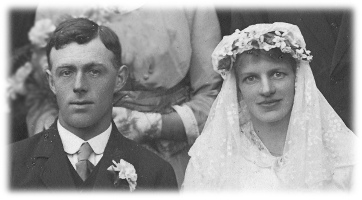
My father, Richard, started farming at Corner Farm, Copt Hewick in 1919-20, but in less than two years farm prices had collapsed in the Great Depression and cattle that had cost £60-80 to buy were now worth only £20 at most. My parents soldiered on throughout the depression of the 20's and 30's, but never really got over this early disaster. At this time of depression in the country, and in farming in particular, life was hard on the farm. There were no tractors, only horses and men to do the work. Fertilizers were very basic and the other major technical advances in farming techniques were not start for another twenty years.
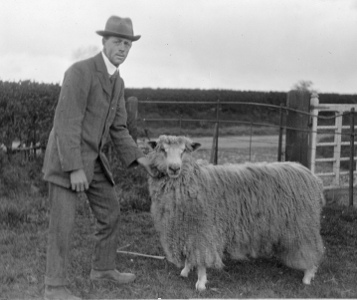
Prior to getting married Mother had been a school teacher at the village school in Nidd, near Ripley, Harrogate. After marrying Father she looked after the books and financial side of the business, whilst Father concentrated on the farm and purchase & sale of the cattle and sheep.
The first twenty years of their married life were a very difficult period for farming because of the Great Depression. Farming improved during and after World War ll, but by then they were getting too old to adopt the new technology that was becoming available. My brothers, sisters & I owe them a great deal for the education and upbringing which they gave us, often at the expense of their own personal comfort.
I was born on 17th January 1923 at Corner Farm. Times were hard after the collapse of farm prices in the early 1920's, and my need of two spells in hospital before the age of four cannot have helped. My elder sister Margaret and I attended Sharow School, to which we walked each day. Sadly Margaret developed pneumonia in 1927 and died aged only 6 - there being no anti-biotics in those days.

L to R: Margaret, Robert, Richard and Mary
(Margaret must have fallen ill soon after this photo).
ln 1928 my father took the tenancy of Little Givendale farm on Newby Estate and we moved that year, now a family with five children. We attended Skelton-on-Ure school and walked to school until a bus service started in the early 1930's. Mother & father played quite an active part in the day-to-day life of Skelton village, including the Church.
Father retired from Little Givendale in 1962, four years after the death of my mother, and he died in 1963, at the age of 73.
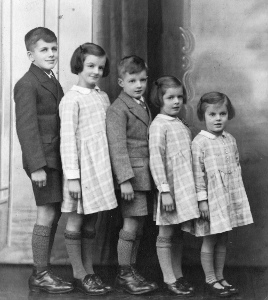
Richard, Mary, Bob, Ruth & Anne
The next generation of the Chester family.
For more photos see The Galleries